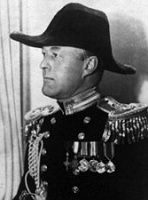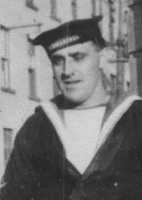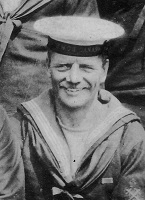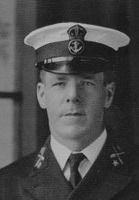|
HMCS MARGARET
Auxiliary Patrol Ship
The Canadian Customs Preventive Service was established in 1892 but it was not until 1914 that it received its first vessel built specifically for customs patrol purposes. That vessel. the MARGARET, was built by the English firm, Thornycroft at its Woolston Works near Southhampton. The 800 ton ship was 185 feet long by 32 feet in breadth, drew 15 feet and had a reinforced hull to resist ice. The 200 ton capacity of the bunkers gave a cruising range of 4,000 miles, or 2,000 miles at full speed. She carried a 30 foot motor launch, a 26 foot lifeboat, a 22 foot captain’s cutter and a 16 foot dinghy. As initially configured she was armed with two 6 pound guns Vickers guns of the latest design. Launched in January 1914 she was completed and delivered to Halifax in April 1914 and took up her customs patrols. Anticipating the outbreak of what would become the Great War by only a few days she was transferred to the Royal Canadian Navy on 4 August and was commissioned on 03 February 1915 as HMCS MARGARET. She, like the HOCHELAGA and CONSTANCE, became part of the fleet of small vessels which served as escorts and patrol vessels along the Atlantic coast and in the Gulf of St. Lawrence for the duration of the war. She was in Halifax Harbour a the time of the Halifax Explosion and suffered minor damage.
The MARGARET was paid off on 03 April 1919 and returned to the Customs Preventive Service following the end of the war and once again took up her patrol duties in the Gulf of St Lawrence and Atlantic Coast in 1919. She was converted from coal to oil-fired boilers in 1925. Her armament was also reduced in 1927 to one six-pounder and seventeen rifles. During these years, much of her work consisted of customs patrols against rum running. In 1932, the CPS was absorbed by the Royal Canadian Mounted Police (RCMP), and the service's personnel and ships were transferred to the RCMP's Marine Section. Following the transfer of the CPS's responsibilities to the RCMP in 1932, the number of personnel was reduced and some former CPS vessels were discarded. MARGARET was among the CPS vessels sold later that year as a result of these cutbacks, and was acquired by the Brazilian state of São Paulo, which named her Ruth, during the Constitutionalist Revolution of 1932. Confiscated by the Brazilian government, she was renamed Rio Branco and was converted to a hydrographic survey ship for the Brazilian Navy in 1934. After serving as a coastal escort vessel in World War II, the Rio Branco returned to hydrographic work and was discarded in 1957 or 1958. (Source: From Rum running to Gun running – the Customs Cutter MARGARET by Harry Holman)
Photos and Documents Ship's company photos The Ship's Bell
Commanding Officers
They shall not be forgotten
Photos and Documents
(MP05) HMCS MARGARET, Gaspe, Quebec (MP06) CGS MARGARET, location unknown From the collection of Melvin N. Patterson Courtesy of Jeff Patterson
|
















